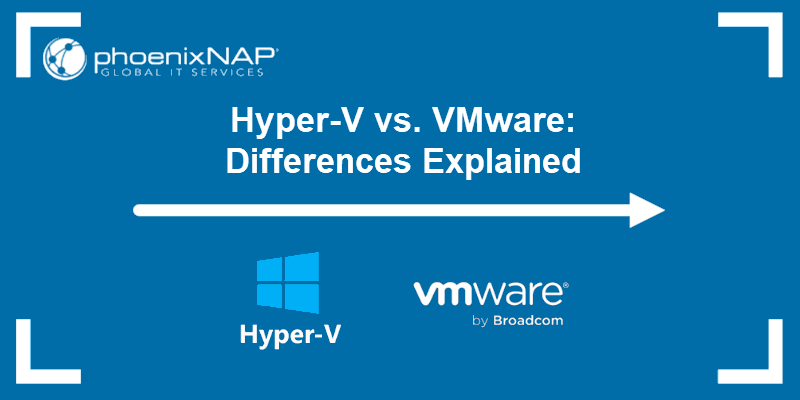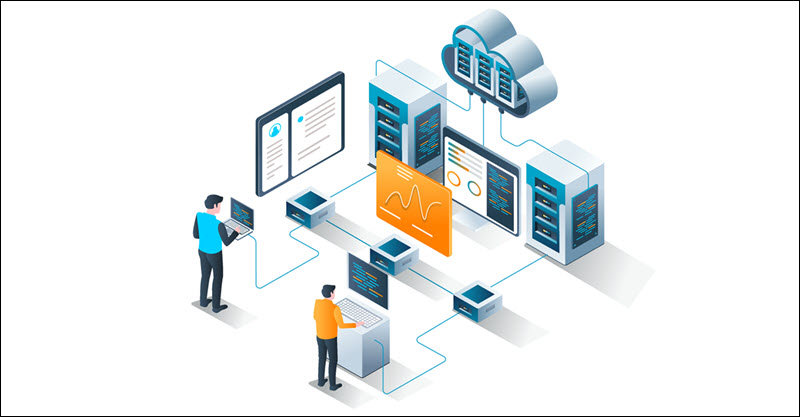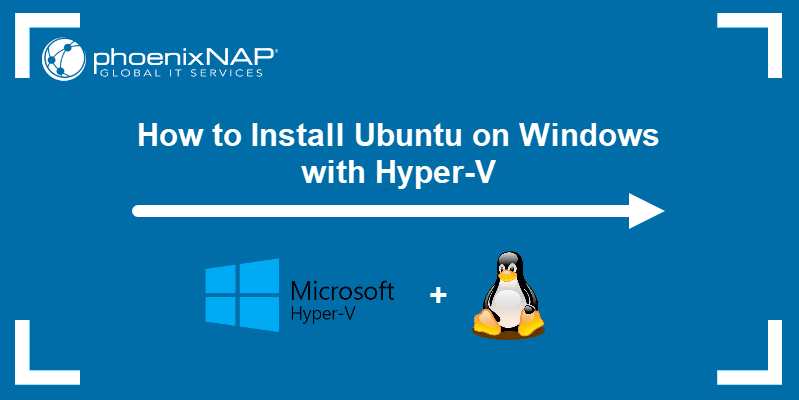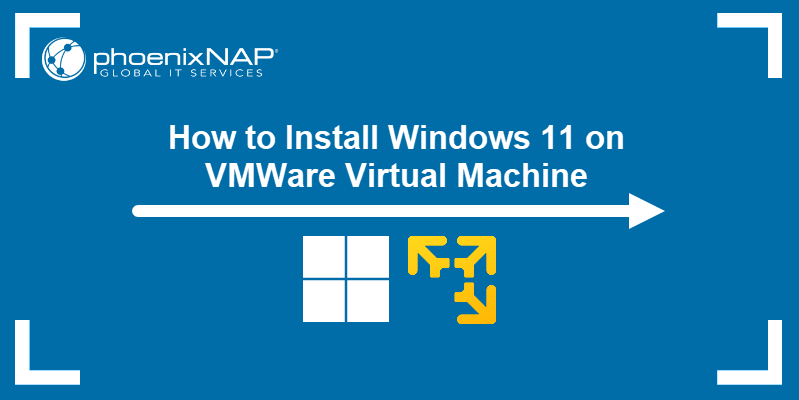Hyper-V and VMware ESXi are bare metal hypervisors (Type 1). They run directly on the host machine's hardware as the primary operating system layer and enable users to create and manage virtualized environments.
Hypervisors can run multiple isolated virtual machines, each with its own operating system, on a single physical server or workstation. Hyper-V and ESXi have distinct architectures, features, and management tools.
This article will explain the differences between Hyper-V and VMware ESXi and determine which one best suits your use case.

Hyper-V vs. VMware: Overview
The table below outlines the operational and technical differences between Hyper-V and VMware ESXi:
| Feature | Hyper-V | VMware ESXi |
|---|---|---|
| Developed By | Microsoft | VMware (now part of Broadcom) |
| Software Type | Type-1 Hypervisor | Type-1 Hypervisor |
| Virtualization Platform | Windows Server virtualization | VMware vSphere |
| Free Version | Available in Windows 10/11 Pro, Enterprise, Education, and Windows Server evaluation editions. | ESXi Free is a feature-limited version with no vSphere integration. It is available for download from the Broadcom Support Portal. |
| Paid Version | Included in Windows Server Standard/Datacenter and Windows 10/11 Pro/Enterprise/Education licenses. | Requires a paid vSphere subscription license (72-core minimum for most editions). |
| Pricing Example | Included on Windows Server Standard at approximately $1,000 per 16-core license. The licence includes rights for 2 Windows Server VMs. | vSphere Standard Subscription costs approximately $50 per core per year. A 72-core minimum means that a subscription may exceed $3,600 per year. |
| Max RAM per VM | 12 TB | 24 TB |
| Max vCPU per VM | 240 | 768 |
| Max Hosts per Cluster | 64 | 96 |
| Max VMs per Host | ~1,024 | ~1,024 |
| Max Logical CPUs per Host | 512 | 768 |
| Kernel | Windows Server kernel | VMware custom VMkernel |
| Guest OS Support | Windows, Linux, FreeBSD | Windows, Linux, FreeBSD |
| Live Migration (host to host) | Yes (Live Migration, Storage LM) | Yes (vMotion, Storage vMotion) |
| Clustering | Windows Server Failover Clustering | vSphere Clustering (HA, DRS) |
| Virtual Disk Format | VHD/VHDX | VMDK |
| Snapshots/Checkpoints | Supports standard and production checkpoints. | Mature snapshot system with Storage APIs and third-party backup ecosystem. |
| VM Encryption | No native VM disk encryption. | Native VM encryption (vSphere VM Encryption). |
| Virtual Networking | Virtual Switches (External/Internal/Private) | vSwitches, vSphere Distributed Switch (vDS) |
Hyper-V vs. VMware: In-Depth Comparison
The following section provides a detailed comparison of Hyper-V and VMware ESXi, examining their features and capabilities.
Ecosystem
Hyper-V is a Microsoft product and is fully integrated into the Microsoft software stack. ESXi, on the other hand, runs directly on bare-metal hardware and supports a broader range of operating systems and workloads than Hyper-V.
Hyper-V
Hyper-V comes bundled with several editions of Microsoft platforms, including:
- Windows Server (Standard and Datacenter Editions)
- Windows 10/11 Pro
- Windows 10/11 Enterprise
- Windows 10/11 Education
If you already use one of these platforms, you can enable Hyper-V as a free Windows feature. This makes Hyper-V the lowest-cost entry point into virtualization for many Windows-centric organizations.
Hyper-V is optimized to work with other Microsoft tools and services, such as:
- Hyper-V Manager. A simple GUI for managing VMs on a single host.
- PowerShell. Enables administrators to automate repetitive tasks and complex configurations with scripts.
- Windows Admin Center (WAC). A web-based console for managing multiple hosts and VMs from a centralized browser interface.
- Active Directory and Azure AD. These features provide built-in identity and access management across Windows environments.
- System Center Virtual Machine Manager (SCVMM). SCVMM expands Hyper-V capabilities for enterprise-level VM and cluster management.
- Azure Stack HCI and Azure Arc. These services extend Hyper-V virtualization into hybrid cloud and cloud-native environments.
Note: Find out how Active Directory Federation Services (ADFS) can help you extend identity management and enable single sign-on (SSO) in Hyper-V environments.
VMware ESXi
VMware's ecosystem is primarily built on proprietary products developed by VMware, but it is also highly expandable through APIs and third-party integrations.
Key components for running a production environment with multiple ESXi-powered VMs include:
- vCenter Server. Enables administrators to manage multiple ESXi hosts through a single interface.
- vSphere Distributed Resource Scheduler (DRS). Automates workload balancing across clusters.
- vMotion. Supports the live migration of virtual machines between hosts with no downtime.
- vSAN. VMware's solution for hyperconverged storage that pools local disks across hosts.
- NSX. Delivers software-defined networking and security in multi-tenant environments.
- vSphere API. Enables developers to integrate with advanced third-party server monitoring, container orchestration, and backup tools.
Licensing and Cost
The listed prices for Hyper-V and VMware ESXi may vary based on your region, software vendor, and VM deployment scenario.
Hyper-V
Hyper-V is included as a role in Windows Server licenses and as a feature in Windows 10/11 Pro, Enterprise, and Education editions. There is no separate license fee for Hyper-V itself.
For example, the Windows Server license that includes Hyper-V has two main editions:
- Windows Server Standard. The current price for a 16-core license is around $1,000. This edition allows users to deploy 2 Windows Server VMs plus the host.
- Windows Server Datacenter. This license costs around $6,000 per 16 cores and allows unlimited Windows Server VMs.
Costs can increase if you require more cores or additional Windows Server VMs. However, unlike VMware, there is no per-core subscription model in place.
Note: On Windows 10/11 Pro, Enterprise, and Education, Hyper-V can be enabled at no extra cost besides the OS license. However, these editions are generally used for development, testing, and home labs rather than production virtualization.
VMware ESXi
VMware's virtualization platform is designed primarily for enterprise-scale environments. The ESXi hypervisor is available as a free download, but this version has significant limitations:
- There is no vCenter Server integration, which means you can only manage one host directly.
- Restricted API support limits backups and integration with third-party tools.
- Advanced features, such as vMotion for live migrations, High Availability (HA), or Distributed Resource Scheduler (DRS), are not included.
The full feature set is available under the vSphere license as a subscription-based, per-core model.
Pricing is around $50 per core per year, with a minimum purchase of 72 cores. This requirement can sometimes force small and medium businesses to license more cores than they actually need.
For larger enterprises, especially in multi-vendor environments, VMware's subscription model offers scalability and access to advanced features, such as vCenter, vMotion, vSAN, and NSX, which often outweigh the higher licensing costs.
Note: If VMware ESXi is outside your price range and you don't need its advanced features, also consider these VMware ESXi alternatives.
Scalability
VMware is highly flexible and scalable, making it well-suited for large enterprise deployments. Hyper-V, by contrast, is often better for smaller environments that do not need dozens of hosts or hundreds of vCPUs.
Hyper-V
A single Hyper-V deployment can handle:
- Up to 240 vCPUs per virtual machine.
- 12 TB RAM per virtual machine.
- Up to 64 hosts per cluster.
These specifications are more than enough for small and medium-sized enterprises (SMEs), where typical scenarios include:
- Running file servers, email servers, Active Directory, and lightweight databases.
- Hosting Custom Relationship Management (CRM) or Enterprise Resource Planning (ERP) applications, such as Microsoft Dynamics 365 or SAP, as well as web applications and departmental SQL servers.
- Supporting a few dozen to hundreds of VMs without the need to hyperscale the infrastructure.

VMware ESXi
VMware ESXi has significantly higher scalability than Hyper-V. It supports:
- Up to 768 vCPUs per virtual machine.
- Up to 24 TB of RAM per virtual machine.
- Up to 96 hosts per cluster.
These specifications meet the requirements of large-scale enterprise deployments and service providers that must scale rapidly, support diverse server workloads, and guarantee uptime.
Typical scenarios include:
- Running thousands of VMs across large clusters with centralized management.
- Supporting in-memory databases, analytics platforms, and artificial intelligence and machine learning training workloads.
- Delivering multi-tenant environments with advanced load balancing, high availability, and resource scheduling features.
Note: Learn more about how vCPUs work and how to calculate the right number of vCPUs for your workloads.
Storage and Backup
VMware's storage ecosystem is more mature and feature-rich than Hyper-V's. This is mainly because VMware is designed to integrate with third-party storage solutions, while Hyper-V primarily relies on Microsoft's built-in tools.
Hyper-V
Hyper-V uses the VHD and VHDX formats for virtual machine disks:
- VHD. A legacy format limited to 2 TB. It is still supported for backward compatibility.
- VHDX. A modern format that supports up to 64 TB per virtual disk with improved resiliency and protection. It also integrates with Volume Shadow Copy Services (VSS) to simplify backup and recovery.
If you are already invested in the Windows ecosystem, this means you do not need to purchase or integrate third-party tools. You can rely on built-in replication features such as Hyper-V Replica or Azure Site Recovery (for hybrid or cloud setups) as viable and cost-effective disaster recovery options.
VMware ESXi
VMware ESXi uses the VMDK (Virtual Machine Disk) format for VM storage. It is designed to integrate with enterprise-grade storage arrays and external solutions at scale.
VMDKs are tightly integrated into the vSphere ecosystem:
- VMFS (VMware File System). A file system that allows multiple hosts to access the same datastore concurrently.
- Virtual SAN (vSAN). VMware's hyperconverged storage solution that pools disks across ESXi hosts. Storage is built directly into the virtualization host. When you add more hosts, you automatically increase the cluster's compute and storage capacity.
- vSphere Storage APIs. You can use these APIs to integrate with enterprise backup, replication, and storage systems.
- vMotion and Storage vMotion. These features allow you to migrate live VMs and their virtual disks between hosts and datastores with minimal downtime.
Note: IOPS testing and benchmarking of underlying physical storage is vital for VM performance. Find out how to measure storage and IOPS performance (Windows, Linux, vCenter).
Checkpoints and Snapshots
Checkpoints are Microsoft's updated designation for snapshot functionality. The concept is similar to VMware snapshots, but VMware's implementation is generally more advanced and feature-rich.
Hyper-V
Hyper-V uses checkpoints to capture the state, hardware configuration, and data of a virtual machine at a specific point in time. They are commonly used to test updates, apply patches, or roll back to a previous VM state if something goes wrong.
The main advantage of Hyper-V checkpoints is their native integration with Windows Server Backup and Microsoft's Volume Shadow Copy Services (VSS) system. With VSS, Hyper-V can create application-consistent checkpoints.

Application-consistent checkpoints ensure that applications within the VM, such as databases and mail servers, flush data properly before capture. This makes them safe to use even in production environments.
With Hyper-V and VSS, you can protect workloads running on SQL Server, Microsoft Exchange, and SharePoint without relying on additional external snapshot or backup tools.
VMware ESXi
VMware ESXi has a more mature snapshot and backup ecosystem, including the ability to maintain multiple snapshots in a hierarchical structure. vSphere Storage APIs allow administrators to integrate with a wide range of replication, backup, and storage solutions from external vendors.
Additionally, Storage vMotion allows you to migrate virtual machine disks between directories while the VMs remain online. As a result, migrations, backups, and recoveries remain application-consistent with near-zero downtime.
Networking
Hyper-V has a simple networking model for building internal and private networks, which is especially useful for sensitive Windows workloads. In contrast, VMware ESXi features an advanced networking architecture designed for companies that require centralized policy enforcement and automation across clusters, such as cloud providers and large enterprises.
Hyper-V
Hyper-V's virtual networking is built around three basic types of virtual switches, which include:
- External. VMs can communicate with the wider physical network via the host's NIC card.
- Internal. Creates a small private network where only the host and VM can communicate.
- Private. Builds an isolated network where only VMs can communicate with each other.
For more advanced scenarios, Hyper-V also supports:
- VLAN IDs (tagging). Used for organising and isolating traffic across virtual networks.
- Single Root I/O Virtualization (SR-IOV). Delivers near-native performance by allowing VMs to bypass the virtual switch and communicate directly with physical NICs.
Note: Find out how virtual switches in Hyper-V and VMware map to the OSI model, and how features like VLANs, SR-IOV, and NSX extend networking across different layers.
VMware ESXi
VMware's enterprise-focused networking stack includes:
- vSwitches. Standard virtual switches that enable VMs to communicate with each other and connect to the physical network through the host's NIC.
- vSphere Distributed Switch (vDS). This centralized switch allows you to manage networking across multiple ESXi hosts from a single interface. It has advanced capabilities, including Network I/O Control (NIOC) to prioritize traffic, port mirroring for troubleshooting, and private VLANs for extra security. When paired with NSX, it delivers full software-defined networking (SDN) and micro-segmentation.
With advanced networking solutions like vDS and NSX, you can tightly control every aspect of your networking architecture and automate the deployment and management of virtual networks at scale.
Security
Hyper-V relies on Microsoft's broader ecosystem for many of its security features. If you already run a Windows environment, most of these protections, such as Active Directory, are likely already in place and only need to be extended to your virtual machines.
Unlike Hyper-V, VMware's VM encryption works across Windows and Linux guests without relying on their operating system tools. The solutions are more advanced with stronger isolation between workloads. That means they can protect not just smaller in-house networks, but also large, multi-tenant environments, such as those found in data centers.
Hyper-V
Several built-in security solutions protect Hyper-V setups:
- Secure Boot. VMs only boot trusted operating systems and drivers to protect against rootkits and other boot-level malware.
- Virtual Trusted Platform Module (vTPM). You can extend TPM features, such as BitLocker encryption, to VMs so the guest operating system has stronger built-in protection.
- Shielded VMs. If you are running Windows Server Datacenter Edition, you can enable Shielded VMs. This feature encrypts the VM state and disk files, keeps host admins from tampering with them, and facilitates secure migrations between trusted hosts.
- Integration with Windows Security. Because it is part of the Microsoft ecosystem, Hyper-V also integrates with tools you may already be using, such as Microsoft Defender, Active Directory, Azure Security Center, and Azure Arc for hybrid cloud setups.
VMware
VMware ESXi has a strong security virtualization framework consisting of:
- Secure Boot. This feature is supported at both the host and VM levels to prevent unauthorized code from executing during system boot.
- vTPM support. Allows you to enable modern guest OS features that require TPM, such as Windows 11 installation and compliance checks.
- VM Encryption. Virtual machine and vDisk-level encryption in VMware is built in and does not depend on guest OS tools. This means your workloads stay protected even if the underlying storage is compromised.
- vSphere Trust Authority. With vSphere Trust Authority, your clusters are protected with cryptographic attestation and secure key management. This feature is particularly important for organizations that must fulfill strict regulatory and compliance requirements.
Choosing Between Hyper-V and VMware
Based on the detailed review of Hyper-V and VMware ESXi features and capabilities, the differences are significant.
Choose Hyper-V in the following cases:
- For basic to moderate virtualization scale. For example, tens of hosts and a few hundred VMs.
- To minimize costs and already have Windows Server licensing.
- In a Windows Server environment that is tightly integrated with Microsoft services, including Active Directory, PowerShell, and System Center.
- If you prefer a simpler management stack that does not rely on third-party solutions.
- For small to medium-sized businesses looking for cost-effective virtualization solutions.
- If you expect to extend your environment into Azure for hybrid cloud or disaster recovery scenarios.
Choose VMware ESXi if you:
- Operate a large enterprise, cloud provider, or highly virtualized data center with thousands of hosts and VMs.
- Need to manage a heterogeneous environment with Windows, Linux, and other operating systems at scale.
- Require maximum performance, scalability, and advanced enterprise-grade features such as vMotion, vSphere DRS/HA, and vSAN.
- Want access to a broad ecosystem of external tools for backup, monitoring, and cloud integration via advanced APIs.
- Aim to automate server administration and lifecycle management tasks.
- Plan to build or expand a large data center with high VM density and strict uptime requirements.
- Intend to run AI/ML or other high-intensity workloads that demand large compute and memory resources.
- Operate in a regulated industry with strict security and compliance regulations, where features such as VM Encryption, vSphere Trust Authority, and NSX micro-segmentation are crucial.
- Intend to extend virtualization into a multi-cloud strategy using VMware Cloud Foundation or VMware solutions on AWS or Azure.
Conclusion
The differences between Hyper-V and VMware ESXi are immediately apparent. Use VMware if you have a large and diverse enterprise environment with various OSs, and Hyper-V if you work in a smaller Windows environment.
If you are looking for a free and open-source alternative, check out our Proxmox and Hyper-V comparison.


